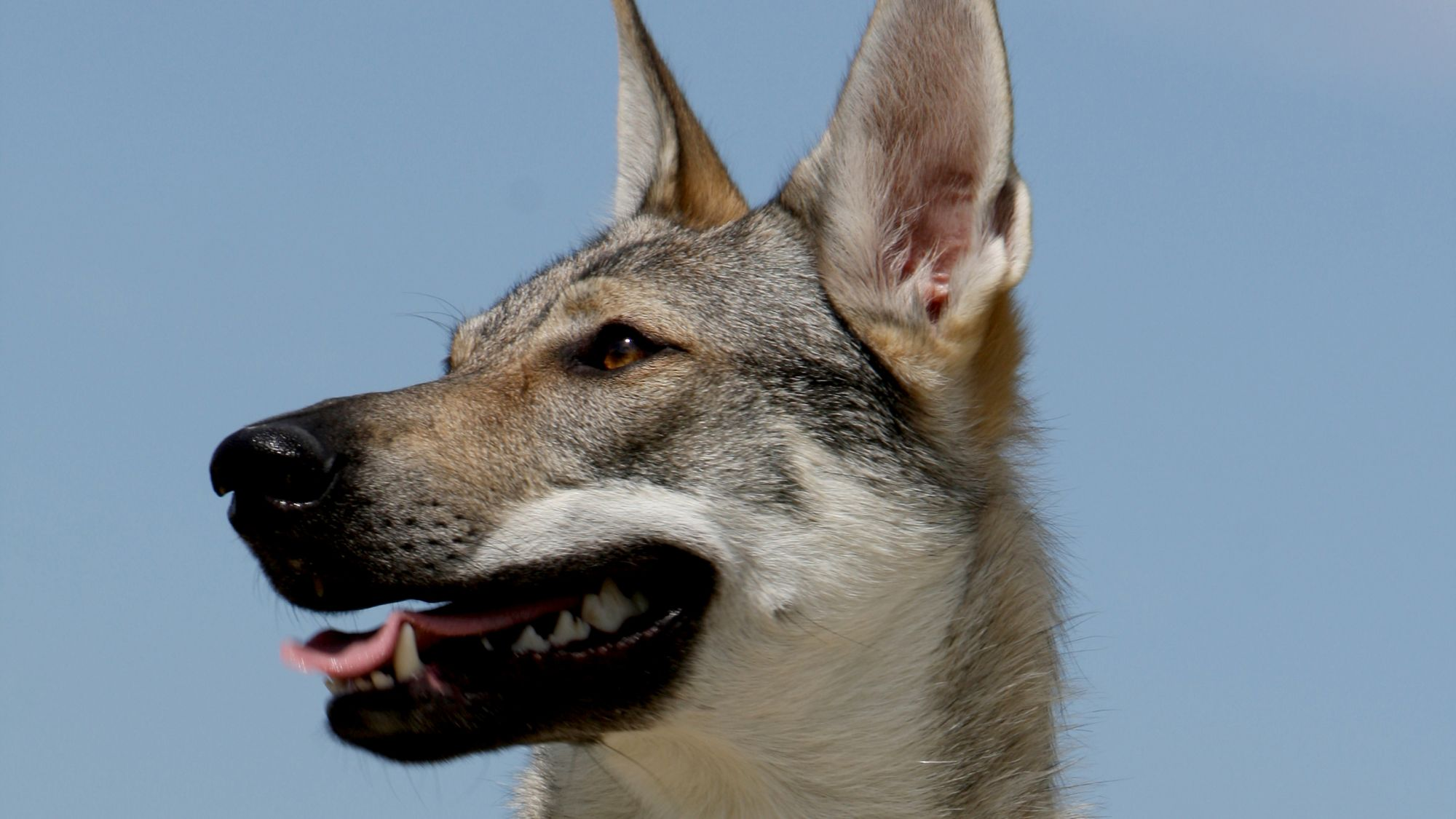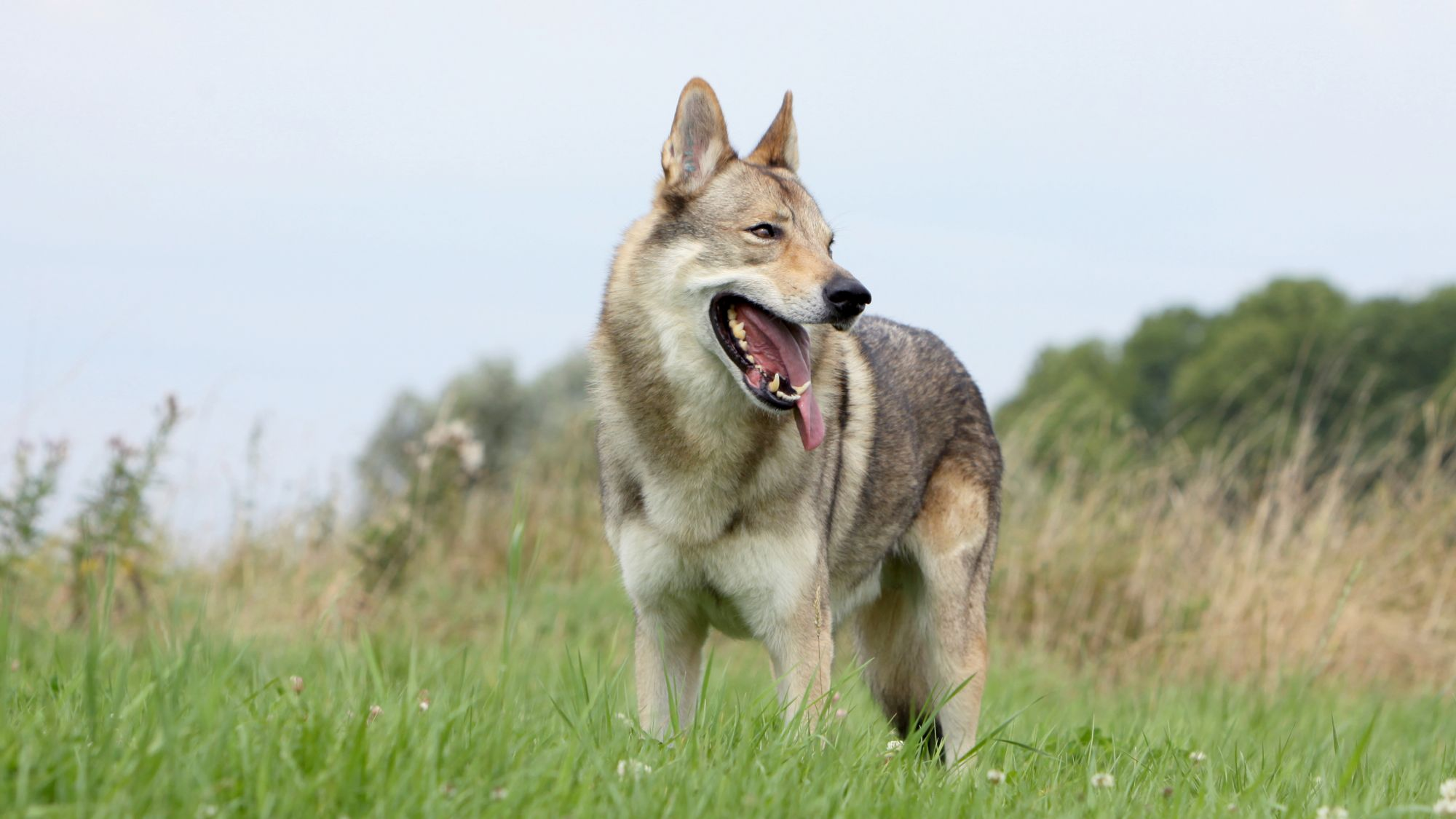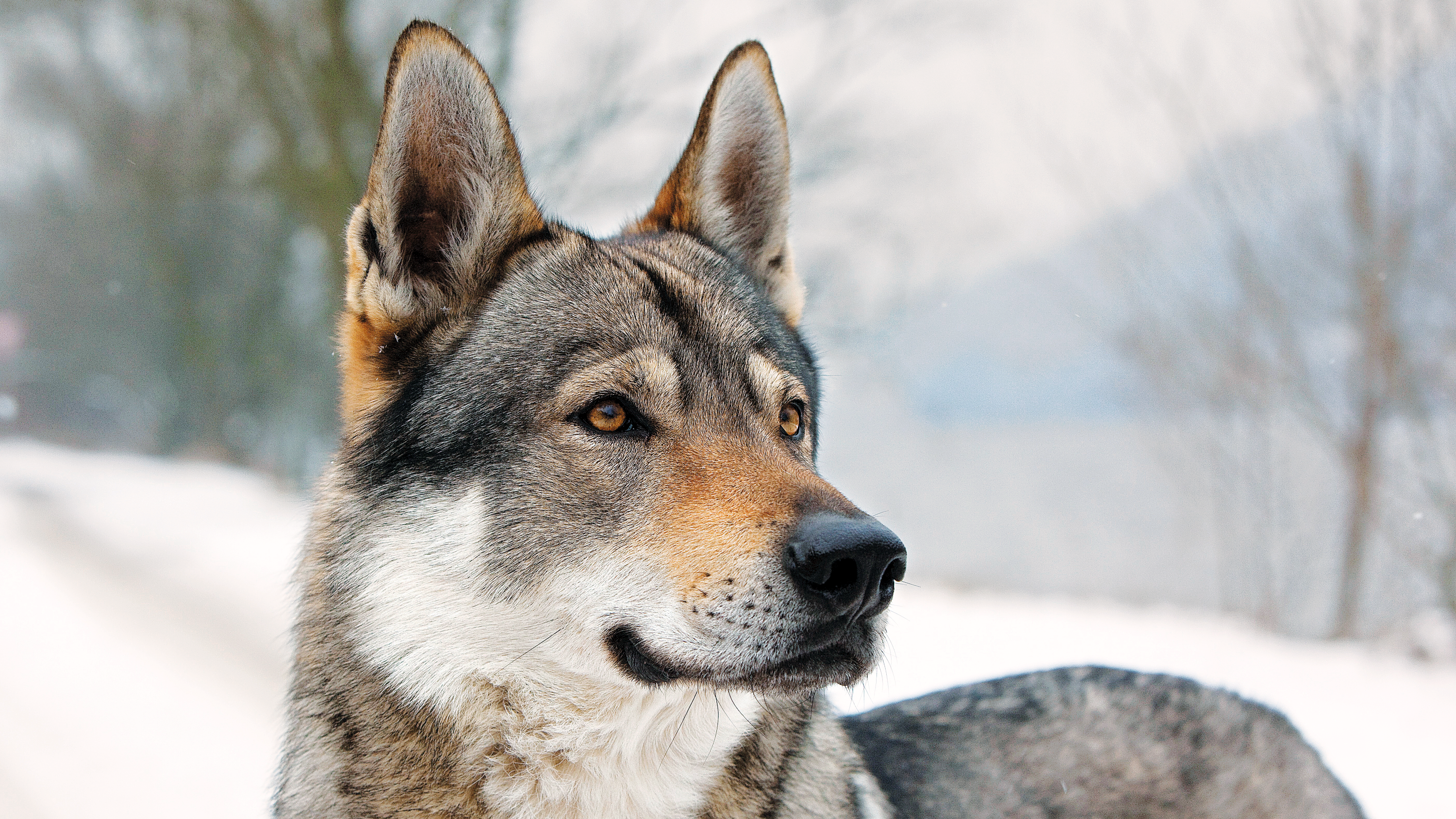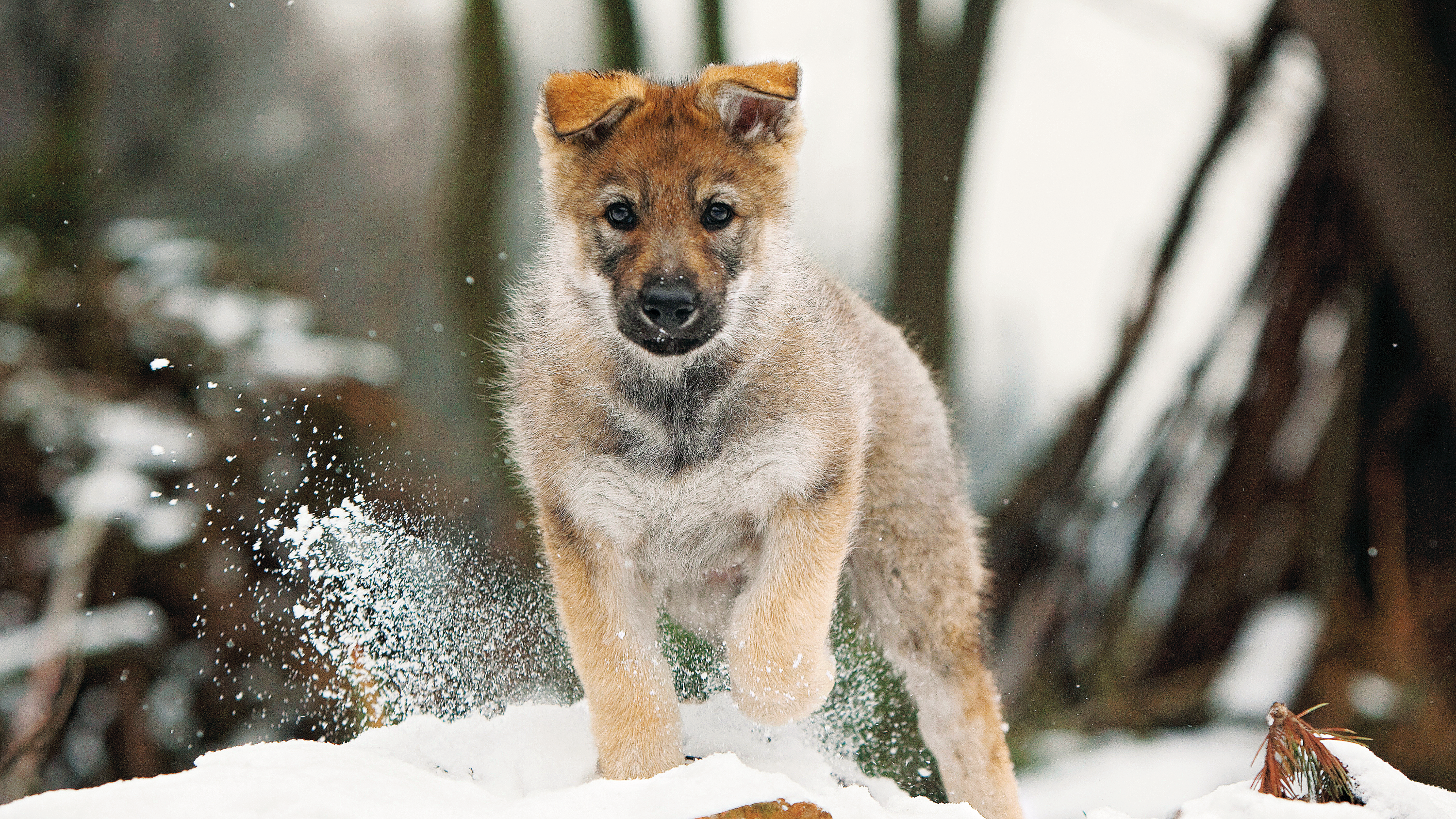
Let's talk Czechoslovakian Wolfdogs
While all dogs are related to wolves in some form, the Czechoslovakian Wolfdog (or Czechoslovakian Vlcak) is a direct descendant. A cross between the Carpathian Wolf and the German Shepherd, with their thick grey coats, impressive physique and amber eyes, they still look uncannily like their wild ancestors today. Intelligent, resourceful and full of stamina, Czechoslovakian Wolfdogs make excellent search-and-rescue dogs and excel at tracking, obedience and agility. However, they are also exceptionally loyal companions and form deep bonds with their human packs.Official name: Czechoslovakian Wolfdog
Other names: Czech Wolfdog, Slovak Wolfdog, Czechoslovakian Vlcak
Origins: Czech Republic

| Drooling tendencies |
|
Warm weather? | |
| Shedding level | Suited to apartment living? | ||
| Energy Level (high, low, medium)* | High | Family Pet?* |
 |
| Compatibility with other pets |  |
Can stay alone?* |
* We advise against leaving pets alone for long stretches. Companionship can prevent emotional distress and destructive behaviour. Speak to your veterinarian for recommendations.
Every pet is different, even within a breed; this snapshot of this breed specifics should be taken as an indication.
For a happy healthy and well-behaved pet, we recommend educating and socializing your pet as well as covering their basic welfare needs (and their social and behavioral needs).
Pets should never be left unsupervised with a child.
Contact your breeder or veterinarian for further advice.
All domestic pets are sociable and prefer company. However, they can be taught to cope with solitude from an early age. Seek the advice of your veterinarian or trainer to help you do this.


| Baby age | Birth to 2 months |
| Puppy age | 2 to 15 months |
| Adult age | 15 months to 5 years |
| Mature age | 5 to 8 years |
| Senior age | from 8 years |

1/7
Get to know the Czechoslovakian Wolfdog
All you need to know about the breed
The envy of the dog park – okay, one of them – the Czechoslovakian Wolfdog certainly cuts an impressive figure with their uncannily wolf-like appearance. But although they may look the part, they are, in fact, predominantly German Shepherd – and the proportion of wolf blood can be as little as 6.25%.
Developed by the Czechoslovakian military back in the 1950’s, their aim was to combine the best characteristics of both animals. Over subsequent years, the breed continued to be refined further – and, as any owner of a Czechoslovakian Wolfdog will attest, the project was a resounding success.
Today, the Czechoslovakian Wolfdog combines the strength, speed and agility of the wolf – as well as excellent eyesight, hearing and smell – with the loyal and devoted personality of the German Shepherd. As such, they tend to form deep attachments to their owners. Also highly intelligent animals, they are often used by search-and-rescue teams and usually excel at canine sports.
That said, they are not a low-maintenance choice of breed. The personality of the Czechoslovakian Wolfdog means they thrive on interaction with their owners, need carefully managed training and require plenty of daily exercise and mental stimulation. As natural pack animals, they also do best with an owner that can take on the role of ‘pack leader’.
As a result, they are therefore not recommended for first-time owners. However, if you have experience of owning a dog, and can invest the necessary time and attention in your Czechoslovakian Wolfdog, they make an exceptional canine companion.

2/7
2 facts about Czechoslovakian Wolfdogs
1. Wolf from the door
Impressively smart, Czechoslovakian Wolfdogs are capable of opening doors, windows and even the fridge. The key is to ensure they have a busy and fulfilled life, as they tend to get up to mischief if they become bored, which can lead to destructive behaviour.
2. In rare form
Although popular in their native Czech Republic and several other European countries, the Czechoslovakian Wolfdog is still relatively rare in the United States and some other countries outside Europe. For example, as recently as 2018, there were only around 200 of them in the US.
History of the breed
In terms of their history, the Czechoslovakian Wolfdog was developed in the 1950’s in the former Czechoslovakia. At that time, the military there wanted to create the perfect breed of patrol dog, so they set about doing so by crossing the Carpathian Wolf with the German Shepherd. The aim was to capture the most useful abilities of the wolf and the best qualities of the dog.
Although the results were successful, the initial variety of dog proved to be a little challenging to train. So work continued to hone the breed and, by the mid-1960’s, the Czechoslovakian Wolfdog had started to resemble the animal we know today. However, it wasn’t until 1982 that the Czechoslovakian Wolfdog was recognised as a domestic breed by the National Committee of Breed Clubs.
Today, although growing in popularity, they remain quite rare in some countries. This can make Czechoslovakian Wolfdog puppies hard to come by. Nonetheless, it is essential to seek out a responsible and trusted breeder to ensure your dog has the best start in life – or why not look into adopting a rescue dog instead? Even that can be quite a challenge, but it’s worth seeing if there’s a re-homing service in your area or keep an eye on dog shelters too.

4/7
From head to tail
Physical characteristics of Czechoslovakian Wolfdogs
1. Ears
Flöt en ekki þung eyru hanga niður beggja vegna höfuðsins
2. Feldur
Stuttur, þéttur feldur yfir vatnsheldum undirfeldi
3. Fur
Feldurinn getur verið svartur, súkkulaðibrúnn eða gulur, allt frá rjómagulum upp í rauðleitan
4. Skott
Langt skottið er ofarlega og er stöðugt á iði, stundum iðar jafnvel allur líkaminn.
5. Leggir og hryggjarsúla
Hlurfallslega vel vaxinn og gott jafnvægi á milli leggja og hryggjarsúlu.

5/7
Things to look out for
From specific breed traits to a general health overview, here are some interesting facts about your Czechoslovakian Wolfdog

6/7
Caring for your Czechoslovakian Wolfdog
Grooming, training and exercise tips
One of the good things about the Czechoslovakian Wolfdog is that their weather-resistant coat pretty much takes care of itself. They will just require an occasional brush. During shedding seasons, however, your Czechoslovakian Wolfdog will need grooming more frequently. Also, ears should be checked regularly and teeth brushed daily. When it comes to training, the Czechoslovakian Wolfdog requires a calm, confident owner who knows how to gently set the boundaries. Early socialisation and puppy training are equally important. The Czechoslovakian Wolfdog also requires plenty of exercise with at least two to three hours of physical activity each day. Activities such as swimming, hiking or games can be a good way to let off steam. In addition, they often do well in canine sports – such as tracking, obedience and agility – which has the added benefit of helping to reinforce the bond between dog and owner.7/7
All about Czechoslovakian Wolfdogs
While it’s true that they have wolf blood in their DNA, Czechoslovakian Wolfdogs are not aggressive by nature. Indeed, they usually form strong attachments to children and see them as part of the pack – especially if they are introduced to them as a puppy. Just to be on the safe side, though, they should always be supervised and extra care should be taken with visitors as they can be suspicious of strangers. One other thing to be aware of is that Czechoslovakian Wolfdogs do retain a strong prey drive, so it’s best to keep them away from small animals.
Interestingly, Czechoslovakian Wolfdogs have a complex system of communication that goes beyond barking and includes a range of other sounds and movements. In fact, in some situations, barking is unnatural for them. So, if anything, Czechoslovakian Wolfdogs tend to bark less than your average dog.
Read more on this topic


How to adopt a dog

Things to consider before getting a dog
Sources
1 - Veterinary Centers of America https://vcahospitals.com/
2 - Royal Canin Dog Encyclopaedia. Ed 2010 and 2020
3 - Banfield Pet Hospital https://www.banfield.com/
4 - Royal Canin BHN Product Book
5 - American Kennel Club https://www.akc.org/